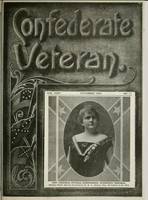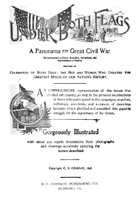Age of Sentimental Reconciliation Literature
By the 1890s, the age of sentimental reconciliation literature had matured with the ascendancy of Lost Cause ideology as the central and popular narrative surrounding memories of the war. This genre emerged as white Northerners and Southerners sought to reconcile after the turbulent years of the Civil War and Reconstruction. On this shift towards sentimental reconciliation literature, historian Karen Keely writes, in her article "Marriage Plots and National Reunion," that to "tackle this difficult goal, authors began churning out novels of intersectional courtship and marriage, turning to the ever-popular love story in the hopes that a good romance could vanquish the troubles of postbellum America, or at least gain a profitable readership. If a cold Northerner and a fiery, resentful Southerner could survive courtship and eventually find marital tranquility, the argument ran, could not the nation as a whole mirror their domestic peace?" (Keely, 622) Thus, we see by the end of the nineteenth century, popular narratives of the Civil War that focused on the nobility of the soldier and a tranquil and romantic Antebellum South as these writers moved away from divisive issues like race and slavery. In the spirit of reconciliation between the North and the South, popular literature focused on individual acts of Northern and Southern 'heroism' rather than the horrors of racial slavery and the causation of the war. In doing so, they popularized the Lost Cause mythology at the expense of Black Liberation, emancipation, and African American agency in the pursuit of freedom narratives for much of the white American population.

